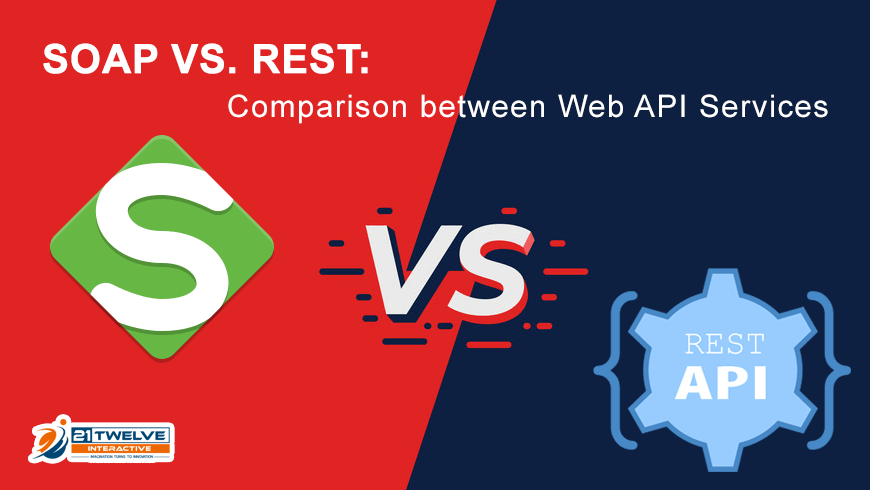
Table of Contents
What is Soap?
SOAP is an abbreviation for Simple Object Access Protocol used for exchanging information of web services network.
It allows the processing of information from different operating systems using a special algorithm.
Soap protocol is quite simple and has many advantages like the ability to operate on any system, run on independent programming models and so on.
SMTP and HTTP are validly used as transport for SOAP, however, HTTP has gained wider acceptance because it works well with today’s net infrastructure; specifically, HTTP works well with network firewalls.
SOAP may be used over HTTPS (which is that the same protocol as HTTP at the appliance level, however, uses an encrypted transport protocol underneath with either easy or mutual authentication; this can be the advocated WS-I technique to supply internet service security as explicit within the WS-I Basic Profile one.1.
This is a serious advantage over alternative distributed protocols like GIOP/IIOP or DCOM, that are usually filtered by firewalls.
SOAP over AMQP is one more chance that some implementations support. SOAP conjointly has an advantage over DCOM that it’s unaffected by security rights organized on the machines that need the information of each transmission and receiving nodes.
This lets SOAP be loosely coupled in a very method that’s impractical with DCOM. There’s conjointly the SOAP-over-UDP OASIS customary.
What is API?
API stands for ‘Application Programming Interface. IT is a tool which allows access to specific features of data on an application or website in a programming language.
In Layman terms, SOAP API is practically used for the transfer of data through various platforms which allow users to see multiple sites at a time.
Web APIs are the outlined interfaces through which interactions happen between associate enterprise and applications that use its assets, that is also a Service Level Agreement (SLA) to specify the purposeful supplier and expose the service path or universal resource locator for its API users.
An associate API approach is an associate field approach that revolves around providing a program interface to a group of services to completely different applications.
What is REST?
Representational State Transfer (RESTful) points to the retrieval of data on accessing a particular coding system. Thus, whenever you need to surf deep into a thing you go on processing each link and its sub-link. The REST application helps you in this way.
These web application protocols are sure to make your work easy in accessing the internet and transfer of data across various applications.
Superimposed system constraints permit intermediaries—proxies, gateways, and firewalls—to be introduced at numerous points within the communication while not ever-changing the interfaces between elements, so permitting them to help in modes of communication and other stuff such as shared caching.
REST allows intermediate process by restrictive messages to be self-descriptive: interaction is homeless between requests and media varieties are to indicate linguistics and exchange info, and responses expressly indicate cache-ability.
Current statistics show that:
- REST users count up to 83% while SOAP is comparatively low as 15%
- The API economy has a good balance between the two country to country.
- Rest has got more views but SOAP is increasing a whopping 16% every few years.
What is API Vs Web Service?
Web service makes it easy to facilitate interaction over a single network, no matter how many devices you are connected to with it. API is the interface that helps in communicating with each other.
Major factors between API vs. web comprise of
- API performs more operations than a web service.
- API works unlike the availability of network or not.
- API is comfortable with any form of communication (channel/network).
The basic advantages of API are:
☛ Ability:
One in every one of the benefits of net service is ability. net services enable applications to speak, exchange information, and share services among themselves.
☛ Usability:
Net services square measure designed to be used sort of a web content request and receive information. net services square measure an equivalent. the potential of net services varies from straightforward info operation too complicated algorithmic computations. That’s why it may be simply used
☛ Reusability
Net Services square measure designed to be combined to deliver a lot of added-value services. net services function building blocks to make it simple to utilize net Service parts in alternative services. Also, gift applications may be wrapped into net services to be utilized by others.
☛ Deployability:
Net Services square measure deployed over the web like standard Apache, and Axis2 to supply hypertext transfer protocol, WSDL driven services. This makes it straightforward to deploy
☛ Cost:
The price is reduced because of new systems square measure assembled from prepacked net services. The saved value may be a profit to each the answer supplier and therefore the client.
Defining a particular service for programming might be a difficult task but it is essential to look into its features.
What to look for?
SOAP vs REST comparison is not so strenuous. We need to understand the primary function of both.
SOAP protocol ensures that data can be exchanged in an easy matter across various platforms and programming languages.
While, REST is systematically designed to work on components, files or objects on a particular device.
SOAP cannot make use REST but it is not the same the other way round. SOAP needs additional information measures for its usage.
Since SOAP Messages contain loads of data within it, the quantity of knowledge transfer victimization SOAP is mostly used.
REST doesn’t want a lot of information measure once requests are unit sent to the server. REST messages principally include JSON messages.
JSON stands for JavaScript Object Notation. Data is sent to a web page from a server; JSON is used.
SOAP and REST each enable you to form your own API. It makes it potential to transfer information from Associate in Nursing application to alternative applications.
Associate in Nursing API receives requests and sends back responses through web protocols like hypertext transfer protocol, SMTP, and others.
Several in-style websites give public API for their users, for instance, Google Maps contains a public REST API that permits you to customize Google Maps together with your own content.
There are also several APIs that are created by firms for internal use.
SOAP and REST are 2 API designs that approach the question of knowledge transmission from the special purpose of reading.
SOAP could be a standardized protocol that sends messages mistreatment alternative protocols like hypertext transfer protocol and SMTP.
The SOAP specifications are official internet standards, maintained and developed by the planet Wide internet syndicate (W3C). As hostile SOAP, REST isn’t a protocol however Associate in the nursing style of architecture.
The remainder design lays down a group of pointers you would like to follow if you would like to supply reposeful internet service, for instance, unsettled existence and therefore the use of hypertext transfer protocol standing codes.
As SOAP is a political candidate protocol, it comes with strict rules and advanced safety features like integral ACID compliance and authorization.
Higher complexity, it needs additional information measures and resources which may cause slower page load times.
REST web services were created to handle the issues of SOAP.
So, it’s an additional versatile design. It consists of solely loose pointers and lets developers implement the recommendations in their own method.
It permits totally different electronic messaging formats, like HTML, JSON, and plain text, whereas SOAP solely permits XML.
REST is additionally a lightweight design, thus reposeful internet services have a higher performance.
Due to that, it’s become implausibly in style within the mobile era wherever even the number of seconds matters a great deal.
The difference between SOAP and REST does make a huge change in the application process of networks.
The implication of API and Web services offers different functions in networking.
☛ Web Service:
- it’s a SOAP-based service and returns information as XML
- it’s not open supply however are often employed by any consumer that understands XML
- It needs a SOAP protocol to receive and send information over the network, therefore it’s not a light-weight design
☛ Web API:
- Internet API is an associate HTTP based mostly service and returns JSON or XML information by default
- It is often hosted at intervals associate application or IIS
- Its open supply and are often employed by any consumer that understands JSON or XML
- it’s light-weight and smart for devices that have restricted information measure, like cell phones
Intervals Associate Applications or known as IIS is an important part of the Windows system.
It is created as an extendable web server for the Microsoft company.
SOAP could be a nice Solution:
Deciding between SOAP or REST is difficult but you can do certain free runs to test those outs. Creating one by your own and implementing can be hard, but using exertions developed by someone already can help you out.
All these trials rounds will let you know what objectives are met when you run them, so it becomes easier to determine its usage by saving upon time and money at the same time.
Asynchronous process and invocation; if your application desires a bonded level of dependability and security then SOAP offers extra standards to make sure this sort of operation. Things like WSRM – WS-Reliable electronic messaging.
Formal contracts; if either side (provider and consumer) have to be compelled to agree on the exchange format then SOAP 1.2 offers the rigid specifications for this sort of interaction.
Stateful operations; if the appliance desires discourse data and colloquial state management then SOAP 1.2 has the extra specification within the structure to support those things (Security, Transactions, Coordination, etc).
Relatively, the remainder approach would create the developers to build this tradition plumbing.
☛ REST works rather well for are:
Limited information measure and resources; bear in mind the come-back structure is absolutely in any format (developer defined). Plus, any browser is often used as a result of the remainder approach uses the quality GET, PUT, POST, and DELETE verbs. Again, bear in mind that REST may also use the XML, Http object that the majority fashionable browsers support nowadays!
Totally homeless operations; if the associated operation has to be continuing, then REST isn’t the most effective approach and SOAP could match it higher. However, if you wish homeless CRUD (Create, Read, Update, and Delete) operations, then REST is it.
Caching situations; if the knowledge is often cached due to the completely homeless operation of the remainder approach, this is often excellent.
Conclusion
Let it be REST API or SOAP; web services need to be connected with a proper simulated network.
When selecting any of the above platforms when linking your data one major factor that to be considered is its advantages.
REST has a few advantages and disadvantages and so it is with SOAP.
In the current year, REST is preferred by many developers due to its credibility but SOAP is also a good choice.




